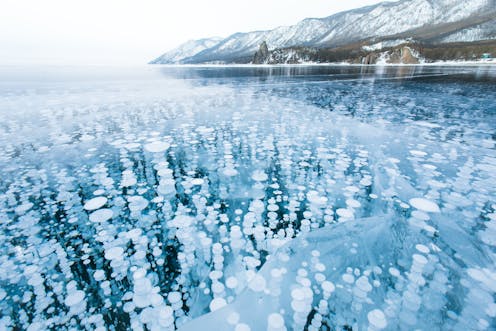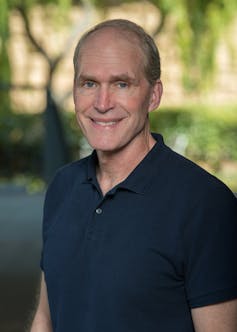
Surging methane emissions put our ability to meet Paris agreement climate targets in jeopardy. But a timely new book presents the scientific, policy and technological challenges and solutions for achieving rapid climate gains by addressing this once overlooked powerful greenhouse gas.
When author Charles C. Mann wrote The Wizard and the Prophet in 2019, he used the tale of two contrasting scientists to summarise the wildly different approaches to solving contemporary environmental crises.
In one camp, the titular prophet is seeing the future and identifying the need for less, to ramp back consumption and live within our planetary means. In the other, the wizard places faith in ever-advancing technological fixes to ensure Earth and its peoples’ future are secure.
In his highly readable book, Into the Clear Blue Sky, US author and professor of earth science Rob Jackson wears the two hats well, both wizard and prophet. This is a book about the many different approaches currently in play to clean up our atmosphere in an effort to solve our climate crisis.
While pragmatically articulating the need to consume less and reduce our emissions (scientifically an almost universally held objective), he lends his voice to the many other wizards who are working on the path to restoring our atmosphere.

The key difference Jackson presents is the target of interest – methane. Carbon dioxide (CO₂) is the most well-known greenhouse gas, for good reason. Emissions of CO₂ from human activity, principally from fossil fuels, is the key driver of climate change.
But this often means overshadowing the role of methane, which is a more powerful greenhouse gas that has historically received much less attention. Jackson’s book highlights that methane’s poor relation reputation is starting to change.
Once considered a sleepy backwater of the climate science community, Jackson propels methane research firmly into the mainstream. This change of emphasis reflects recent international agreements, such as the Global Methane Pledge, that involve over 150 nations pledging to reduce their anthropogenic methane emissions by 30% on 2020 values by 2030 as part of the Glasgow climate pact.
Methane is around 80 times more powerful as a greenhouse gas than CO₂. It has contributed around 30% of global warming since the start of the industrial revolution. But it lasts for only around 10 years in the atmosphere.
So any reductions in methane sources, or enhancements to methane sinks, can have a disproportionately important climate effect over the short-term, effectively buying time before the more challenging target of decoupling the world’s economy from fossil fuels and associated CO₂ emissions is addressed.
Abating methane emissions and enhancing atmospheric removal offers an opportunity to rapidly mitigate warming. This climate villain becomes a key saviour protagonist in efforts to stay within safe climate limits.
From the Vatican to the Amazon
This is no dry tome. Starting with a stiflingly hot visit to the Sistine Chapel in the Vatican, Jackson takes on a persona not unlike Robert Langdon, a character in the novels of Dan Brown, looking closely at a fresco under careful restoration, appreciating the delicacy of the work and drawing parallels to the need to restore the atmosphere.
Jackson recounts his engagement with a series of people who are working to restore Earth’s atmosphere. He examines agriculture, specifically ways to control methane emissions from the sector, by reducing beef consumption (cattle being both a source of methane and a major cause of tropical deforestation that may reduce a [vital land surface methane sink])(https://theconversation.com/weve-discovered-the-worlds-trees-absorb-methane-so-forests-are-even-more-important-in-the-climate-fight-than-we-thought-235233 “”) either through meat-free alternatives, or through feed additives that help to reduce methane in cattle burps.

He acknowledges that atmospheric removal or drawdown of greenhouse gases like methane is a symptom of our failure to control emissions, but he still introduces researchers working to make this possible at scale. While Jackson makes the science accessible, he is open about the disagreements in approaches, the inherent uncertainties and the challenges posed.
Jackson’s book concludes on the Amazon floodplain, a biome that contributes natural methane emissions but one that’s also increasingly vulnerable to the effects of climate change. Recent severe droughts in the Amazon are a case in point.
Read more: COP26: a global methane pledge is great – but only if it doesn't distract us from CO₂ cuts
Long overdue, the book places methane firmly in the mainstream, and it is a non-expert audience that will derive the most new understanding when reading it. Jackson makes clear that there is no single quick-fix solution.
While he considers the Global Methane Pledge to be an important step towards achieving climate stabilisation and reducing the likelihood of such extreme climate events, he thinks that, ultimately, placing a price on methane will get us there faster.
In highlighting the ingenuity of many individual scientists and activists, wizards and prophets, pushing hard to address the climate crisis, there’s a sense of opportunity and hope that the path to restoring the atmosphere is within our collective grasp.

Don’t have time to read about climate change as much as you’d like?
Get a weekly roundup in your inbox instead. Every Wednesday, The Conversation’s environment editor writes Imagine, a short email that goes a little deeper into just one climate issue. Join the 35,000+ readers who’ve subscribed so far.
Vincent Gauci receives funding from the UK Natural Environment Research Council and Spark Climate Solutions.
This article was originally published on The Conversation. Read the original article.







